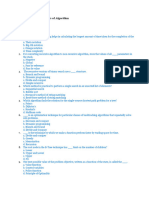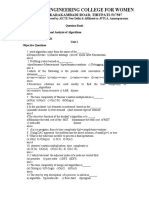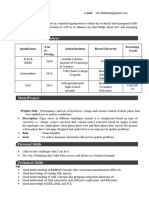0% found this document useful (0 votes)
5 views2 pagesAlgorithm
The document outlines key concepts in algorithm efficiency measurement, including time and space complexity. It discusses various graph theory concepts such as indegree, outdegree, and bipartite graphs, along with their applications. Additionally, it differentiates between dynamic programming and divide and conquer approaches, and lists problems with polynomial time algorithms.
Uploaded by
harini6735Copyright
© © All Rights Reserved
We take content rights seriously. If you suspect this is your content, claim it here.
Available Formats
Download as PDF, TXT or read online on Scribd
0% found this document useful (0 votes)
5 views2 pagesAlgorithm
The document outlines key concepts in algorithm efficiency measurement, including time and space complexity. It discusses various graph theory concepts such as indegree, outdegree, and bipartite graphs, along with their applications. Additionally, it differentiates between dynamic programming and divide and conquer approaches, and lists problems with polynomial time algorithms.
Uploaded by
harini6735Copyright
© © All Rights Reserved
We take content rights seriously. If you suspect this is your content, claim it here.
Available Formats
Download as PDF, TXT or read online on Scribd
/ 2































































































